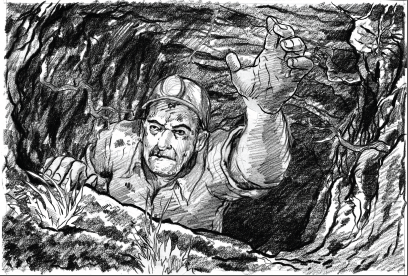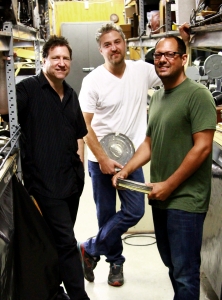

The aftermath of the Knox Mine disaster in Northeastern Pennsylvania, which claimed the lives of 12 miners, included the convictions of mining company and union officials because of illegal digging under a river and the economically crippling cessation of deep mining in the region. But the full story of what happened on Jan. 22, 1959, when the icy Susquehanna River overflowed its banks and flooded underground mine veins with 10 billion gallons of water, is incomplete without an account of one longtime miner’s slow, death-defying 50-foot climb up an abandoned air shaft to alert rescuers to the site of several trapped coworkers. For that, Amedeo Pancotti, 50, of Pittston, Pa., received the Carnegie Medal nine months later.
The chilling details of those events nearly six decades ago, little known outside the Pittston region, are being retold in a full-length documentary, “Knox Mine Disaster,” produced by filmmaker David Brocca and his cousin, Albert Brocca. David Brocca, who was raised in nearby West Pittston, said the project has given him a newfound perspective on the region’s culture.
“They say we stand on the shoulders of giants, and these miners were our grandfathers and great-grandfathers, who paid with their lives, their health, and their dreams of a better life for their children,” said Brocca, who lives in Los Angeles. At the urging of Robert P. Wolensky, who has written extensively about the disaster, Brocca and his cousin started the ambitious project with a series of interviews in 2008. The following year, for the 50th anniversary of the incident, they screened a short film at the Pennsylvania Anthracite Heritage Museum in Scranton, Pa.
Afterward, Brocca continued to collect leads for more interviews, prompting them to resume filming when they returned to the area. In all, they’ve done more than 20 sit-down interviews with miners, their relatives, and historians. “The interviewees were always very open and welcoming because we’re hometown boys,” Brocca said. “This allowed us to capture a more personal perspective that I feel we wouldn’t have gotten otherwise.”
Among the participants were Pancotti’s daughter, Hortense Oschal, who nominated him for the medal, and grandson, George G. Oschal III. “They were very gracious and allowed me to hold his Carnegie Medal in my hands,” Brocca said. “It’s something I’ll never forget.”
The Broccas’ big breakthrough happened three years ago, when they met Jack Scanella, the local television cameraman who filmed the scene. They then received permission for film archivist Dino Everett at the University of Southern California to restore Scanella’s 16-millimeter film.
“One of our biggest challenges was trying to identify the people in these half-a-century-old reels. We showed the films to historians and relatives, cross-referenced them with old newspaper photographs, and even posted headshots to our Knox Facebook page asking followers: ‘Can you identify this person?’ We basically had to use every multimedia platform available to us, and it became a real treasure hunt.”
“We can see the light at the end of the tunnel and are aiming towards a film festival premiere in 2017,” Brocca said. “The goal is to attract a distributor that can get the documentary out to a worldwide audience.”
For more information about the documentary, see knoxminedisaster.com.
—Chris Foreman, Case Investigator
Return to imPULSE index.
See PDF of this issue.

